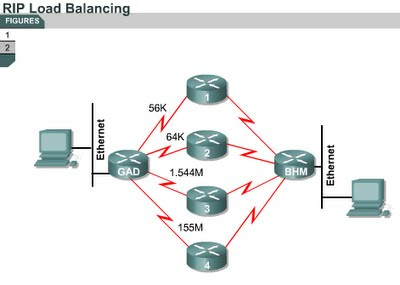IGRP stability features
7.3.4 This page will describe three features that are designed to enhance the stability of IGRP:
• Holddowns
• Split horizons
• Poison reverse updates Holddowns
Holddowns are used to prevent regular update messages from reinstating a route that may not be up. When a router goes down, neighbor routers detect this from the lack of regularly scheduled update messages.
Split horizons
Split horizons are derived from the premise that it is not useful to send information about a route back in the direction from which it came. The split horizon rule helps prevent routing loops between adjacent routers.Poison reverse updates
Poison reverse updates are used to prevent larger routing loops. Increases in routing metrics usually indicate routing loops. Poison reverse updates then are sent to remove the route and place it in holddown. With IGRP, poison reverse updates are sent only if a route metric has increased by a factor of 1.1 or greater.
The update timer specifies how frequently routing update messages should be sent. The IGRP default for this variable is 90 seconds.
The invalid timer specifies how long a router should wait in the absence of routing-update messages about a route before it declares that route invalid. The IGRP default for this variable is three times the update period.
The holddown timer specifies the amount of time for which information about poorer routes is ignored. The IGRP default for this variable is three times the update timer period plus 10 seconds.
Finally, the flush timer indicates how much time should pass before a route is flushed from the routing table. The IGRP default is seven times the routing update timer.
IGRP lacks support for VLSM. Cisco has created Enhanced IGRP to correct this problem.
The next page will show students how to configure IGRP.





